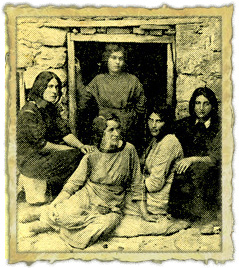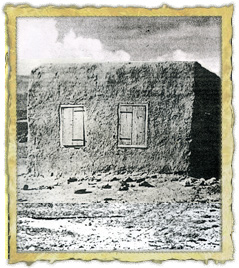 |
|
"The Migdal Estate" the stories about life on the farm reflect the innocence of the period and its people as well as the internal vision of the young pioneers leading the Zionist settlement
"The Midgal Estate"
1910 the "Migdal" Estate, located on the shoreline of the Kinneret, was bought from the Germans. The head of the estate, Glikin, requested that the "Hachoresh Union" (formerly "HaMerkaz HaHakla'i" - The Agricultural Centre) should provide him with laborers. I was authorized by the union to negotiate on the matter and I ended up moving to the estate with ten men-laborers and two women-laborers. We were the very first Jewish workers on this land. By the end of this year reached more that sixty workers. This is when my late cousin Jacob Zamdwiess joined the estate 1911 - The laborers' activity at Migdal consisted of four branches - field crops, nursery & planting, dairy farming and irrigated crops. My responsibility was the irrigated crops. These crops included various vegetables, lucerne and cotton. My cousin mainly dealt with the cotton. At that time, I was assigned to study irrigation and irrigated crops in Damascus. While I was at Damascus, I checked the option of exporting various vegetables and seeds from Migdal to Damascus area. The "Grocers Group" 1912 - By this time, many workers have already acquired experience in the various agricultural sectors, but still, there was very little know-how in growing vegetables. I decided to establish the "Greengrocers group". I proposed to the members of "Migdal" to take charge of growing vegetables, instead of base it on profit and loss partnership with the estate management. The idea appealed to the members and very soon we settled adjacent to the Kinneret. The "Kvutza" (collective farmstead) established later became the "Gar'een" (small group of people planning to establish a new settlement) in "Hamra" and later on "Kfar Yehezkel. Although I was very well experienced in growing irrigated crops and the crops were successful, we encountered one night a big disaster - most of the vegetables froze, especially the tomatoes. This incedent discouraged us and by the beginning of the new year the partership was dissoluted. The authorities requested that all settlers should be of Turkish nationality, and I became a Turkish citizen. 1913 - I was still the coordinator of the irrigated corps, we exported to Damascus a large quantity of vegetables, beans, eggplants etc. This was the first vegetable export from the country.. My first workplace From Hava Haruvi's "Diary chapters" I arrived with a friend and we were sent to work at the vegetable garden. Our accommodations were in the fields overlooking the Kinneret. We stayed in a tin shack, hot as a furnace. We had a kitchen, bedreoom and dining room in the shack. Temperatures in the shade were 35-40 Deg. C. We worked from sunrise to sunset. We had a break only when it was too hot to work. I stayed with my friend in one room, while Natan Haruvi and his cousin Jacob were staying in the other room. The four of us became very good friends and we formed a small cooperative. The girls, me and my friend, cooked and did the laundry. We had our meals together and even bought a cow and a few chickens together. On Saturdays, we went to the estate to collect our mail, exchange books and meet with the rest of the estate workers. In those days men and women used to gather and sing together. Jacob, who had a guitar, would accompany us. At the time, Larvae of Anopheles mosquitoes have been found in marshes and swamps around the spring. These mosquitoes were the cause for Malaria. I had been sick with Malaria and burning up with fever. Quinine was the most effective treatment for malaria. Despite all this, I found "Migdal" to be very pretty and romantic. For Saturday night meals, we always cought fish from the spring. After a while the four of us moved to live together in a house near the estate wall, overlooking lake Kinneret and the Ginosar valley |
Chapters |
 פועלות בחוות מגדל - 1914 |
|
 |
|








